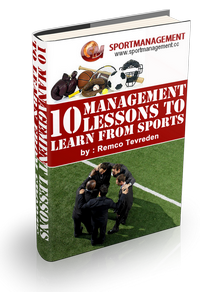Tips on How to Manage Successful and Efficient Meetings for Sports Organizations
If you work either as a volunteer or a professional in sports, I am sure that if you like it or not….you are having meetings.
Any organization needs to have clear and effective communication. Regular meetings are a successful way to establish a place where members and leaders can voice their concerns, opinions, and thoughts. Running an efficient meeting takes a certain set of tricks and tips. Although they may seem common sense, many who try to organize and hold meetings lose track and the meeting is unsuccessful. Sports organizations consist of many members. Depending on the level of profession, organizations will have various leaders and offices. Volunteers in younger sports organizations still need to hold meetings whether it’s with players, coaches, or parents.
Here are some tips to manage a successful and efficient meeting for a sports organization.
1. Establish an open and accepting area of communication. If people don’t feel that they can talk freely and be heard, they are less likely to speak up. The purpose of holding meetings is to communicate ideas and receive feedback. Without allowing others the freedom to share their opinions or concerns, a vital part of a successful meeting is missing. If you are leading a meeting, make it clear that you want to hear the others’ thoughts. If you want to hold questions till the end, tell them so they understand they aren’t being ignored or shut down.
2. Reward those who participate. This works if you are holding a meeting with those who are under your leadership. The rewards don’t have to be big or even tangible. For example, if someone isn’t doing their part or their assignments, ignore them. Those who do participate deserve your attention. This technique uses psychology. When a person sees that he or she is not receiving attention, they are more likely to try and get it. As an example, if one of your team is creating a playlist, you can remark on how well they’re doing and that you appreciate it. When you apply this tip, make sure that in the meeting you hear from everyone but that one person. If you’re trying to get feedback, but your members are unresponsive, bring candy or Mardi Gras beads and toss them to those who respond. Although this may not work for everyone, it’s a start.
3. Be flexible with the agenda. If someone in the meeting has a point they want to discuss and the other members find it a priority, don’t fret. Straying from the agenda won’t hurt the meeting. If this point pertains to the purpose of the meeting or is important to the sports organization as a whole, let it play out and then return to the agenda after.
4. Make sure the meeting is interactive. This doesn’t mean that the members should all help you plan the meeting—it means that members should feel as if they are a part of the meeting. If you’re presenting a PowerPoint or reviewing a handout, make sure that it’s not a read-through. Nothing is more frustrating than wasting time going over something they can read later. If it was a handout they needed, you wouldn’t have called a meeting. If you are presenting a PowerPoint follow proper PowerPoint presentation guidelines. One of the most effective ones is not having all your information verbatim what you plan to say on the slides. This is also extremely frustrating for members.
5. Make it brief. Effective and successful meetings are anywhere from 5 minutes to 45 minutes long. After that time period, studies show that people stop absorbing information. This means that anything you say after the 50-minute mark is less likely to be retained making your meeting less successful. By having short, frequent meetings, your members will be more likely to remember the information you want to share as will you.
6. Invite only those who need to be there. By inviting more to the party than is necessary, you’re not only wasting their time but yours. If you only want a meeting with the players, you don’t need to ask anyone else to attend the meeting. This would be unnecessary and would more than likely hinder the progress of your meeting.
7. Do not take minutes, but write an action list. Most of us have learned to take minutes, of everything everybody states. I’ve experienced that this is a true waste of time. If you need these details, just record the meeting with a voice recorder or even your phone. My recommendation is to just make an action list, with the specific action/decision, the person(s) responsible and of course a deadline.
Without a good communication though, the sports organization will not function optimally. Communication is key and having meetings simply helps establish a line of communication between you and others.
Do you have any tips to add? Please leave them in the comments below


